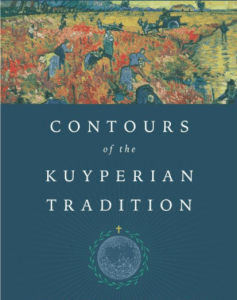My belief is that American evangelical (broadly defined) Christianity’s perception of its relation of the church and state is Kuyperian and it is important therefore to understand Kuyperianism. In a broad sense this Kuyperian tradition focuses on God’s cosmic rule under Christ and that the gospel sets out to redeem the whole of creation, not just individuals. This theme touches on one of N.T. Wright’s common touchpoints that pushes against what he and others perceive to the commonsense evangelicalism.
What then is the mission (of the church, of God, of individuals?) if this broader Kuyperian framework is adopted? We are looking at Craig Bartholomew’s comprehensive sketch of the Kuyperian tradition, and in this chp we are treated to a special clarification of mission. (See Contours of the Kuyperian Tradition. )
)
He opens early with some Lesslie Newbigin summary on mission:
Since the life of the church as a whole, both as a gathered community and as a scattered people throughout the world, is the major means by which the Spirit executes his mission in the world, the entire life of the church can be characterized from one aspect as witness or missional. However, not every activity is aimed at inviting people to repent and believe in Christ. All of Christian life has a missional dimension, but not all of it is characterized by a missional intention.
But his focus in this chp is Kuyper, and really not so much Kuyper as the Kuyperian tradition, so he focuses on J.H. Bavinck, famous Reformed Kuyperian tradition missiologist. (He’s the nephew of H. Bavinck.) J.H. Bavinck is a 20th Century missiologist, therefore subsequent to Kuyper, and Bavinck was deeply involved in the ecumenical missionary conferences of the 20th Century. Bavinck was more of a John Stott type.
Mission is that activity of the church throughout the whole world—which in its deepest essence is an activity of Christ himself—through which it calls the nations in their diversity to faith in and obedience to Jesus Christ, demonstrates to them by the signs of [its] service and ministry how the salvation of Christ encompasses all of life, and at the same time teaches them to look forward to the perfection of the Kingdom, in which God will be all in all.
Which gives rise to “what about the kingdom?” and the typical Kuyperian theory of kingdom comes to the surface next, in the words of Bavinck himself:
In our time we still struggle with the idea of the Kingdom of God. For a long time Christians have overemphasized the fact that the Christian faith is something that concerns man’s innermost being and is the way to salvation, without paying enough attention to the fact that faith places man in the perspective of the Kingdom Something of the power of the new life in Jesus Christ must penetrate social and economic life, commerce and industry, science and art. We must not leave any sector of individual or social life to its own devices. God wants us to gather together right now all things in this world under one head, Christ.
Four of his emphases deserve more emphasis today in the missional theology discussion:
Bavinck took as his point of departure the assumption that the Bible contains God’s complete revelation, which is valid for all peoples and all times.
Bavinck rightly notes just how foundational the doctrine of creation is for mission. … Covenant is also vital for mission, since it rejects a natural bond between Yahweh and Israel.
Bavinck’s recognition of mission as the characteristic of the time between the already and the not-yet of the coming of the kingdom is a seminal insight and fundamental for missiology. Bavinck notes, “The gospel contains something of the glory of a king’s commission. It must therefore end with a summons to proclaim the kingship of Christ over the whole world.”
But especially this next one: the notion that we can simply listen and discern what God is doing fails the biblical text and Bavinck was in the right with this idea of mission: God, yes; preaching, yes:
We go into one land after the other throughout the entire world; we seek, and we preach, and all the time it is God who completes his work of reconciliation through us. For in his work of reconciliation God is concerned not only with individuals, but also with the “world,” and in turning to the world, God takes us along. Missionary work is thus anchored in divine activity.
So the church, not to be reduced to mission for Bavinck, has three themes to its mission: doxological, Word-of-God, and for the world.
Bavinck, emerging as he did both from concrete missionary experience and from international discussions on missiology, engaged the religious question, the religious quest, and the religions with a five fold typology:
1. the sense of belonging to the whole, the cosmos: the relationship of I and the cosmos; 2. the sense of transcendent norms: the relationship of I and the norm; 3. the sense that somehow our existence is governed: the relationship of I and the riddle of my existence; 4. the sense of a need for redemption: the relationship of I and salvation; and 5. the sense of our relatedness to a superior power: the relationship of I and the supreme power.
The danger today, Bavinck saw and is to be seen even more today in the West when mission confidence is all but collapsed, is syncretism:
For Bavinck, it is possible that syncretism is more dangerous than outright opposition, since the syncretistic reception of Jesus can paralyze the preaching of the gospel. “It may work like a slow poison that sucks away the Church’s strength. But whatever the Church may meet, it is clear that it has the duty to speak honestly and with dignity with the other religions.”
So, here Bavinck’s contributions:
Mission is of the essence of the church.
Scriptural.
[There is much] Western baggage.











